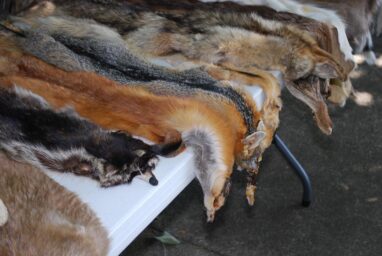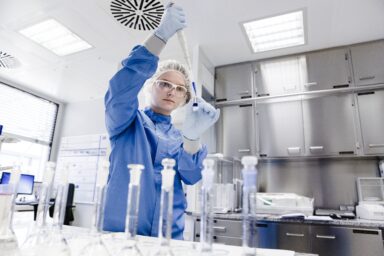More competition, less red tape, more jobs for young people, improved working conditions. These are the objectives set by the European Commission in its Vision for Agriculture and Food adopted today.
The Commission aims to achieve the goals by providing incentives, cutting down on paperwork, and strengthening dialogue with sector representatives. It also plans to give more room for member states to set their own nation-specific rules. However, the EU executive is yet to present concrete steps.
The vision for agriculture and food owes its existence to the response to last years’ protests by farmers spreading from the Netherlands to most European countries. The European Commission first convened a so-called strategic dialogue which ended this past summer. The vision presented today follows up on its conclusions.
“The vision we have adopted today includes strategic steps for agriculture and food. It is a clear and strong response to the call for help,” said Raffaele Fitto, Vice-President of the Commission for Cohesion and Reform, at a press conference. He stressed that food is a strategic sector, both for the Union’s competitiveness and for its self-sufficiency. The Commission, he said, wanted to involved more dialogue in the future.
You might be interested
In particular, he said, future agricultural policy should involve more local decision-making. “We are proposing simple, innovative and tailor-made solutions. They must be adapted to national needs, and we must avoid a one-size-fits-all strategy,” he said.
“This vision recognises that agriculture in Europe is diverse, this is one of our strengths. But so are the challenges it faces. You cannot compare farming in the Austrian Alps to farming in Cyprus,” added his colleague, EU Agriculture Commissioner Christophe Hansen.
Four priorities
He outlined the Commission’s four main priorities for agriculture: attractiveness, competitiveness and resilience; preparedness and the future; and fairness and better working conditions in rural areas.
In particular, the Commissioner spoke about a fairer economic environment. “Production costs should not be higher than prices, but sometimes that happens,” he pointed out. The Commission therefore wants to look more closely at the supply chain, i.e., what stages of the farmer-to-consumer journey are profitable (and how much). Similarly, he said, an equal footing with foreign farming importers must be rigorously enforced for European farmers.
This concerns, among other things, banned substances. The principle should be adhered to even now, as the Commission used to stress in the past. “If it’s a threat to human health or, say, bees – it’s a threat to us in other areas as well,” Mr Hansen said, adding that Europe would also push for restrictions on harmful pesticides and other substances in supranational negotiations at the World Trade Organisation and the Food and Agriculture Organisation.
He also recalled the situation which arose during the previous Commission’s mandate: the EU executive, having faced considerable criticism, withdrew legislation on new limits on pesticide use. “We have been too slow to develop biopesticides, we have banned some substances in recent years, but we have no substitute,” he said, adding that further research in this field should be encouraged. However, he sidestepped questions on whether this meant that pesticides harmful to human health would be used.
Mr Hansen also stressed the importance of keeping subsidies high. The support is distributed through the so-called Common Agricultural Policy (CAP) and amounts to about a third of the European budget. It should be better targeted at those in most urgent need, the Commissioner said.
He suggested to make more frequent use of instruments such as capping total support amounts, or declining rates of support inversely to the size of the total area of subsidised land. In the past, the CAP has faced criticism for supporting the largest agribusinesses in many countries.
However, much of this distribution is dependent on rules set by national governments. Change towards greater fairness must be gradual, Mr Hansen said. “If a company has invested for 20 years and now one political decision cuts it off completely, there is no predictability left,” he explained.
The Commission will present the concrete shape of the CAP reform at a later date, following the negotiations on the so-called multiannual financial framework for 2028-2034. These will start in the summer and will directly influence the size of the CAP in the future. Indeed, voices abound arguing that CAP will no longer be able to receive a third of the European budget in the face of new priorities, such as a stronger EU defence.
“It is impossible to anticipate the discussion,” Fitto said now when asked if it would be possible to maintain the current size of the CAP.
What remains unspoken
Very little was said by the two commissioners on the area of environmental sustainability of agriculture. Yet this was a dominant theme in the last Commission’s term under the Farm to Fork strategy. This included the aforementioned withdrawn legislation on pesticides and the regulation on nature restoration, the watered-down version of which the European Parliament adopted by a razor-thin majority.
“We have to take this seriously, but we have to find solutions together with farmers and food producers, it has to be through dialogue,” the Commissioner said now about the relationship between agriculture and the environment. He cited a model example followed by some countries that allows farmers to choose from a range of possible environmental measures that best suited them.
Overall, Mr Hansen said, the Commission wants to go down the route of incentives rather than bans. He believes that a system of eco-payments, which farmers can receive on top of the basic direct payment for farming organically, has been successful. He pointed out that farmers were among of the first victims of climate change and could already feel its effects.
Asked directly about the aforementioned Farm to Fork strategy, the name of which has not been released until now, Fitto said the vision presented was a good balance between ecology and competitiveness. “This is the vision for this Commission, an approach that takes into account many aspects. We cannot compare it with past documents,” he replied.
“We are in no way abandoning any of our (environmental) objectives. The objectives to contribute to reducing emissions remain in place and our farmers largely agree with them, but we need to engage them more,” Mr Hansen added. This should happen through further strategic dialogues, but also through the newly established Agriculture and Food Council, which Hansen will chair.
Less bureaucracy and more youth in agriculture
Cutting red tape, both in the CAP and in other policies, should be another important step to make European agriculture more competitive. Mr Hansen wants to present a concrete proposal by the end of this year. “We need a more proactive policy to reduce the administrative burden so that farmers can focus on growing crops and not have to deal primarily with paperwork,” he said.
Mr Hansen also wants to present a strategy for greater water resilience in order to respond to the intensifying problems farmers are feeling as a result of prolonged periods of drought. Another promised strategy would look at making the sector more attractive to the young. Today, the average age of the European farmer is fifty-seven, with only 12 per cent of farmers under forty.
Commissioner Fitto also mentioned the re-establishment of links between seasonal foods and local traditions, and the greater promotion of agricultural labels as a tool for increasing the value of food while preserving food heritage. This means protecting the names of foods linked to the place where they are traditionally produced, such as Port wine or Olomouc cheese.










